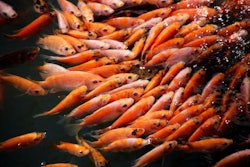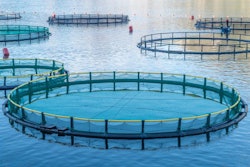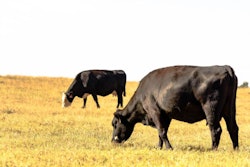
Producers looking to slow pig growth in a pinch have multiple viable options, study shows
An emergency study initiated just before COVID-19 arrived in the U.S. last year should help producers evaluate options to slow pig growth in the event of future crises.
While the theory behind slow-growth diets existed long before COVID, little data existed to point producers to effective, practical solutions when the pandemic began to threaten supply chains around the globe last year, according to Nicholas Gabler, a professor of animal science at Iowa State University. So in February 2020, Gabler’s team at the Iowa Pork Industry Center rapidly mobilized to initiate a study of diets capable of slowing the growth of finishing pigs.
“By March we had pigs on tests, and April is when everything hit the fan,” Gabler said. “We were presenting data almost in real time.”
One year later, the results of their work evaluating three potential methods have been summarized in the Journal of Animal Science. While all three diets proved effective at slowing the growth of finishing pigs, some could be more advantageous than others in certain circumstances, Gabler said.
Supplementing swine diets with calcium chloride to induce an electrolyte imbalance and reduce feed intake was the most effective strategy in terms of sheer efficacy in reducing growth, Gabler said. The study also found that pigs fed calcium chloride recovered faster when taken off the slow-growth diet. However, there is a potential downside to long-term use, Gabler said: the calcium chloride changed the pH of the final meat product.
The difference over the 2-6 week feeding trials at Iowa State was too small for consumers to notice, Gabler said. But if fed over a longer period of time, feed calcium chloride could result in a tougher pork product.
Another option — which wouldn’t require the costs associated with adding a supplement to the diet — is feeding a high-corn, lysine-deficient diet, Gabler said. The research team found that the pigs maintained good health on a 97% corn diet with added vitamins and minerals, but did not gain weight as rapidly as with standard diets.
Increasing the diet’s non-dietary fiber content with the addition of soy hulls was also effective in slowing pig growth, Gabler said, but required the purchase of an additional feed ingredient and was not as effective as the high-corn diet.
“The biggest thing that came out of this data,” Gabler said, “is there’s some data to say these are some options, and then everyone can make their decision of what will be best for them.”
In addition to checking for issues with meat quality, Gabler said the team also took animal welfare into account, to ensure none of the diets had a negative impact on the animals’ well-being.
“The last thing people want to do is skip feeding, fast pigs, withhold water, or any to that stuff,” he said.
While there is interesting work to be done regarding how to reverse the slow-growth diets and make up gains when markets return, Gabler said his own lab is mostly tying up loose ends and is 80-90% back to its normal research routine. But even if COVID is hopefully a thing of the past, he said the research on these slow-growth diets could still prove useful to producers who are looking to develop plans to respond to other potential disasters.
“The same strategies could apply to cyber attacks or to farm animal disease complications, if they happen to come here,” Gabler said. “It’s all about managing pig flow.”

















